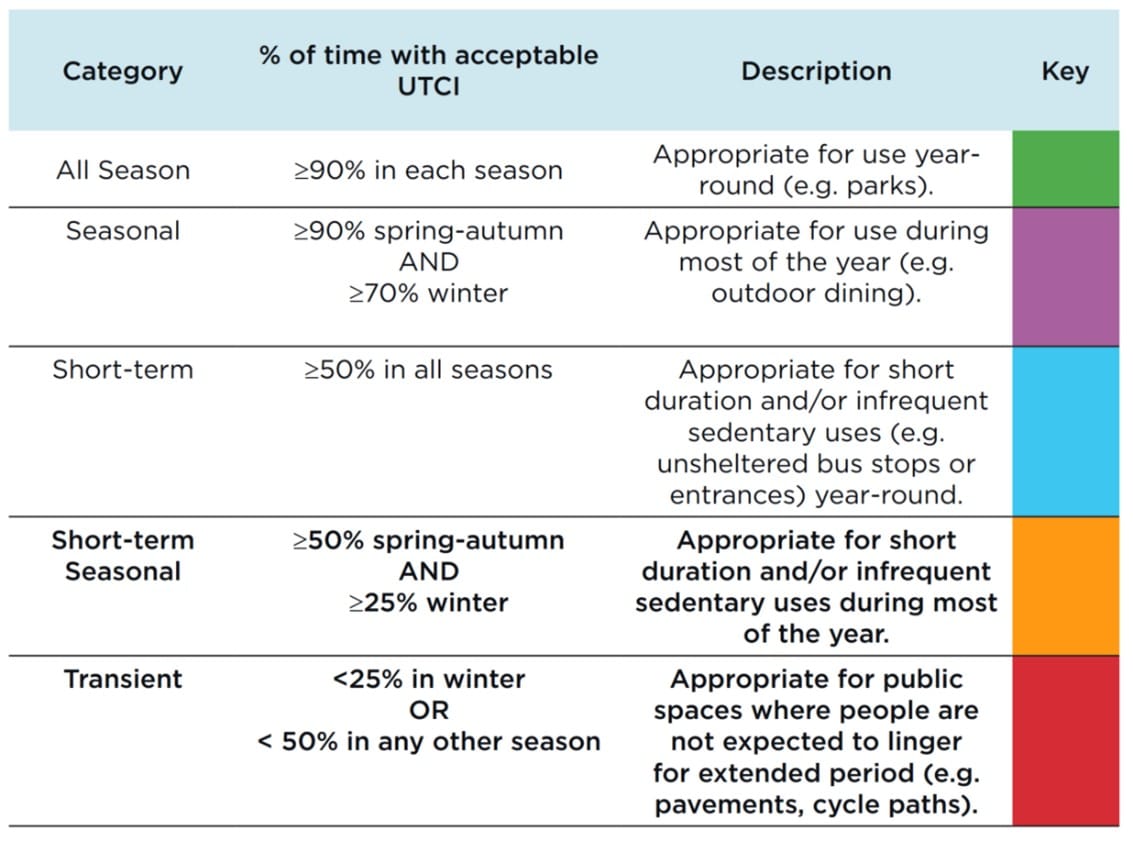Wind Engineering Project In UK
Overview Of Thermal Comfort Studies Provided For 55-56 Aldgate, London

The “Thermal comfort guidelines for developments in the City of London” were introduced in December 2020. The function of these guidelines is to understand the microclimatic qualities of the City’s public spaces as well as introduce a methodology to assess the impact of new developments on the microclimate of the City’s streets, parks, public roof gardens and terraces and other public spaces.
A person’s thermal comfort is an indication of whether they are satisfied with the indoor/outdoor thermal environment. As outlined by ASHRAE 55-2010, six primary factors are considered when determining acceptable conditions for thermal comfort. These include metabolic rate, clothing, air temperature, radiant temperature, air speed as well as humidity. Studies into the temperature range which people find acceptable in naturally conditioned spaces have shown that acceptable thermal environmental conditions are dependent on the ambient air temperature as well as the mean radiant temperature.
The Universal Thermal Climate Index (UTCI) is a thermal comfort index, used by COST European Cooperation in Scientific and Technical Research and now also used for predicting thermal comfort in the City of London. It is a measurement of an occupant’s perceived heat or cold stress and is calculated using the ambient temperature, mean radiant temperature, humidity, occupant activity, clothing level and airspeed. The UTCI is defined as the equivalent air temperature of an isothermal environment at a specific relative humidity, in which an occupant, wearing clothing to a quantitative level of 0.5clo and at an activity level of 1.2met, experiences the same total heat loss from the skin in comparison to an occupant in the actual environment. The model utilises heat balance principles to relate thermal comfort to ten key sensations, ranging from extreme cold stress to extreme heat stress.
For the proposed development at 55-56 Aldgate in London, and as per the London Guidelines, UTCI was computed for every hour in the climate time-history using the standard formulation available, and the frequency that UTCI is between 0° and 32° was computed for each season as this range is currently considered ‘appropriate’ for outdoor pedestrian use. Table 1 was then used to define the categorisation for all locations within around the proposed development.
Table 1. Thermal Comfort Criteria

Measurements were made in the conducted simulations at selected critical trafficable outdoor locations within and around the Proposed Development from 36 wind directions and 5 years of environmental and solar weather data using a 1:1 scale detailed model. The effect of nearby buildings and land topography were accounted for through the use of a proximity model, which represented an area within a radius of 500m.
Overall, in both the Existing and Proposed Site with Cumulative configurations it is anticipated that the City of London Thermal Comfort Category conditions will be suitable for their intended usage. As such no treatments were necessary in this instance. Should the proposed development have been found to have caused thermal comfort issues, it would have been possible to include shading or wind devices to alleviate these issues.


